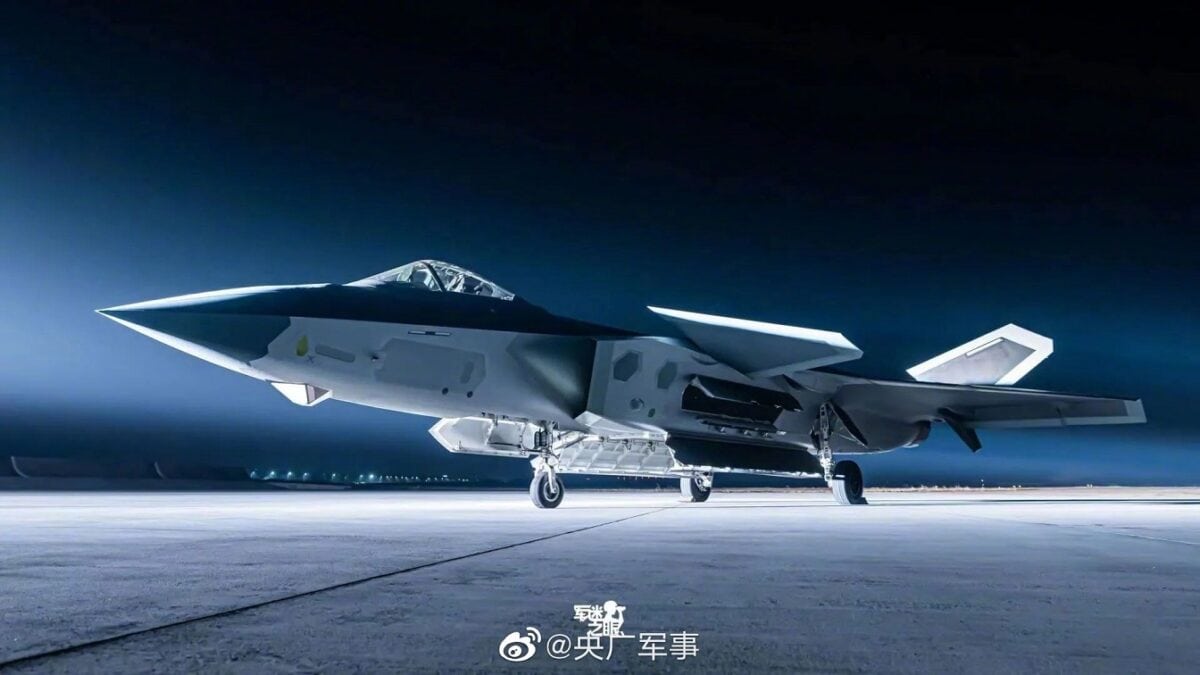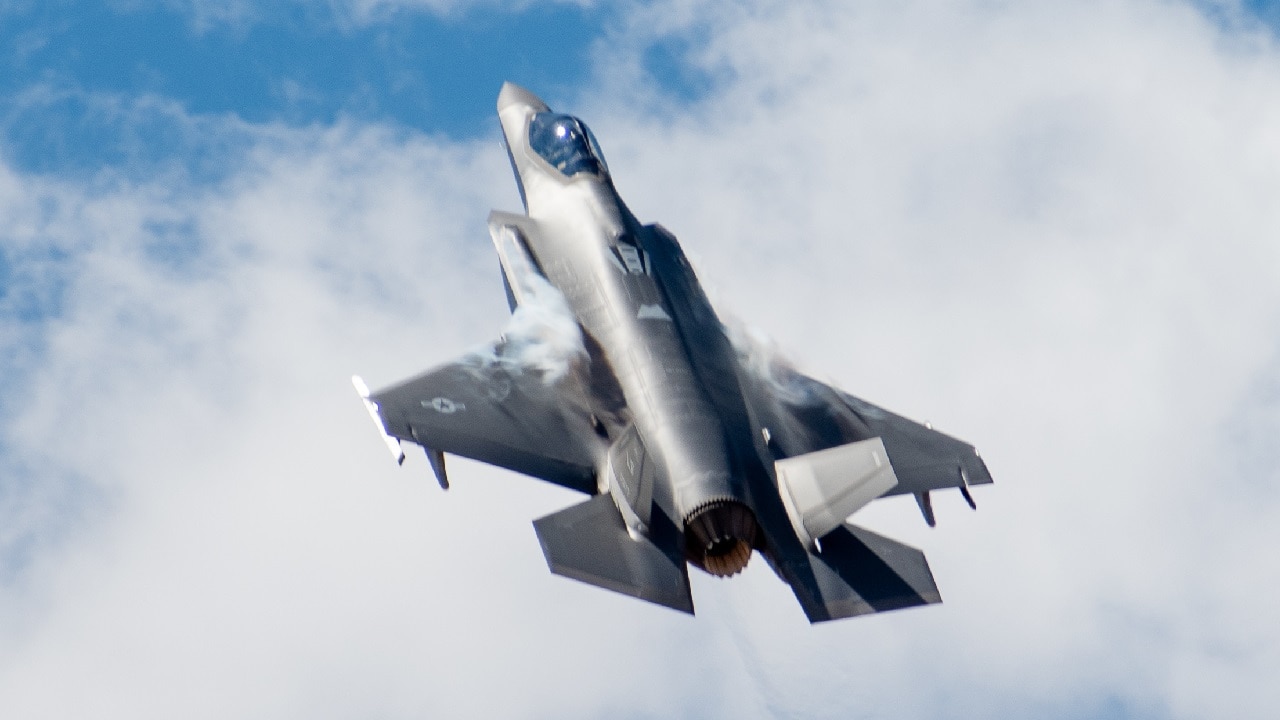The U.S. military has two stealth fighters that dominate the skies: the F-22 and the F-35 stealth fighters. And while those platforms are mature, China is slowly pushing out its own stealth fighter, the J-20 Mighty Dragon. But at least for now, the U.S. Air Force isn’t exactly worried about it.
American F-35 Joint Strike Fighters had at least one close encounter with China’s 5th-generation J-20 over the Pacific in March of this year, and the response from Air Force officials has been somewhat mixed.
While the commander of Pacific Air Forces described the fighter itself as “nothing to lose sleep over,” he qualified his dismissive statements with positive observations about how Chinese forces are operating their first stealth aircraft.
“It’s a bit early to say what they intend to do with the J-20, so really all we’ve seen it do is air superiority,” explained Pacific Air Forces commander Gen. Kenneth Wilsbach in a March video uploaded by the Mitchell Institute for Aerospace Studies.
“But we notice that they are flying it pretty well. We recently had – I wouldn’t call it an engagement – where we got relatively close to the J-20s along with our F-35s in the East China Sea, and we’re relatively impressed with the command and control associated with the J-20.”
The first stealth fighter born outside of the US (sort of)
Despite Russia’s Su-57 Felon beating China’s J-20 into the air in 2010, Russia’s limited defense budget and struggling economy have resulted in slow progress and numerous setbacks for its stealth aircraft program. As a result, China’s Chengdu J-20 Mighty Dragon, which flew for the first time in 2011, managed to beat the Su-57 into service by a three-year margin in 2017. Since then, China’s produced as many as 150 stealth fighters, rapidly eclipsing Russian Su-57 production and placing China squarely in second place in terms of global stealth fleets.
The J-20’s roots date back to China’s J-XX program which began in the late 1990s. By 2008, some 11 years after the F-22 Raptor’s first flight, Chengdu’s Project 718 was chosen to move forward as the basis for the country’s first stealth fighter. Nevertheless, the design chosen would see significant revisions in 2014 before being declared “combat ready” and put into production in 2017.
Like many of China’s aircraft, evidence suggests the J-20 was not designed from scratch. The aircraft appears to borrow heavily from earlier stealth fighter programs out of both the United States and Russia — specifically, America’s F-35 and F-22 programs and Russia’s now-defunct MiG 1.44. But while comparisons to the MiG are based mostly on design similarities, comparisons to American fighters are based on China’s access to a plethora of design documents from both programs.
In August of 2014, a Chinese national living in Canada named Su Bin (who also often went by Stephen Su) was arrested for leading a hacking effort to steal over 630,000 files from American aviation firms like Boeing and Lockheed Martin for the Chinese government, including F-22 and F-35 “blueprints” that would “allow [China] to catch up rapidly with U.S. levels … [and] stand easily on the giant’s shoulders,” according to his own emails that were entered as evidence.
How does the J-20 compare to American stealth fighters?
The single-seat, twin-engine Chinese fighter has a wingspan of just more than 42 feet, a bit shy of the F-22’s 44′, and an overall length of 69 feet 7 inches, considerably longer than the F-22’s 62′. China has struggled to field the jet’s intended 5th generation engines, known as WS-15s, which are expected to produce some 44,000 pounds of thrust each. As a result, many of today’s J-20s fly with either Russian-sourced AL-31s capable of producing 33,000 pounds of thrust each, or more recently, China’s own equivalent, the WS-10C.
The aircraft’s top speed is rated as Mach 2, with a combat range of 1,100 nautical miles, and a service ceiling of 66,000 feet. It’s capable of carrying four medium or long-range missiles inside its primary payload bay, as well as two additional short-range air-to-air missiles in small secondary bays on either side of its fuselage.
The J-20 is often compared to America’s air superiority F-22 Raptor, but technically speaking, it was designed to fill a different role. While the Raptor was always intended to dominate air combat, the J-20 was originally meant to fly deep into enemy territory to conduct strikes against ground targets, more akin to the F-35.
“It’s not anything to lose a lot of sleep over,” General Wilsbach told the press earlier this month.
“Certainly, we’re watching them closely and seeing how they felt and how they operate them.”
The J-20 is still evolving — both in terms of technology and capability
China has devoted considerable energy and resources to closing the air-combat capability gap presented by the F-22, incorporating new systems like thrust-vector control into the latest iterations of the aircraft to make it a more dynamic dogfighter. Recently, the J-20 has been leveraged in exercises that emphasize this air-to-air role, as China sees the fighter as its primary means of countering American stealth jets like the F-22 and F-35.
“We’re seeing relatively professional flying and it’s still too early to tell exactly what they intend to do with [the J-20] – whether it’s going to be more like an F-35 that’s capable of doing many, many missions or more like an F-22 that is primarily an air superiority fighter that has an air-to-ground capability,” according to General Wilsbach.
The J-20’s air-to-air capabilities are bolstered by a growing array of weapon systems, and in particular, by the PL-15 long-range air-to-air missile. The PL-15 can achieve speeds above Mach 4 via its dual-pulsed solid-fuel rocket motor and is said to be able to engage aircraft, drones, and even cruise missiles at ranges as far as 120 miles.

J-20 Stealth Fighter. Image Credit: Creative Commons.
Of course, actually hitting an airborne target from those ranges is no small undertaking. In order to keep tabs on fast-moving targets while en route, the PL-15 leverages a mid-course two-way datalink to bolster its miniature active electronically scanned array radar seeker with updates from nearby Command & Control aircraft like China’s Shaanxi KJ-500.
“Some of their very long-range air-to-air missiles are aided by that KJ-500. Being able to interrupt that kill chain is something that interests me greatly.”

